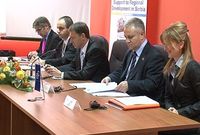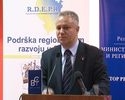- Serbia
Get to know Serbia
- Citizens
Culture and science
Health services
Pension and disability insurance
- Business
Employment
Economy
- Media
- Government
- Contact
Keep in touch
Contact form
Back
Keepin touch
Whether you have a question, comment, suggestion or any problem in the purview of the government, send us your message and we will try to respond as soon as possible. If your problem is not in our purview, we will forward your message to the relevant institution.
Q:
A:
Project to boost capacity of regional development agencies
Kragujevac,
9 December 2009
Deputy Prime Minister and Minister of Economy and Regional Development Mladjan Dinkic and Ambassador of the European Commission delegation to Serbia Vincent Degert presented in Kragujevac today the EU project “Regional Socio-Economic Development 2”.
Dinkic specified that funds from the project worth €14 million will be granted to regional development agencies, municipalities, chambers of commerce and entrepreneurial associations from 17 districts in Serbia.
He stressed that applications for the funds will be received over the next 90 days, starting from today, adding that €3 million will be allocated for the first tender call. He also said that the lowest amount of funds to be allocated for a project is €300, 000 and the highest €500, 000.
Out of the projected €14 million, five million will be used to boost the capacity of nine regional development agencies, explaining that the project is the first step towards strengthening regional agencies, while the rest of the funds will be allocated to local self-governments.
The Minister said that in order to boost inter-regional cooperation, local-self governments wanting to apply for the funds could do so in groups of three conjoined municipalities. Two out of the three municipalities will have to be from adjoining districts, he noted.
Degert stressed that the project is a continuation of Serbia’s EU accession and is aimed to reduce regional discrepancies.
It secures the right to a partnership between local and regional factors in defining economic development, Degert explained, noting that this is the second EU project of this kind, worth €14 million, while the total EU fund for regional development stands at €21 million.
Minister Dinkic announced that Serbia will soon apply for EU candidacy, when it decides with its EU partners that the moment is right.
By unfreezing the transitional trade agreement Serbia will gain a lot since it will be able to export without customs fees, which will be of the greatest benefit for the Serbian economy since it exports around €2 billion worth of goods a year.
The project “Regional Socio-Economic Development 2” is financed by the EU from IPA funds in order to help strengthen Serbia’s capacity for creating and implementing a regional development policy through improving the capacity of regional development agencies and local self-governments.
He stressed that applications for the funds will be received over the next 90 days, starting from today, adding that €3 million will be allocated for the first tender call. He also said that the lowest amount of funds to be allocated for a project is €300, 000 and the highest €500, 000.
Out of the projected €14 million, five million will be used to boost the capacity of nine regional development agencies, explaining that the project is the first step towards strengthening regional agencies, while the rest of the funds will be allocated to local self-governments.
The Minister said that in order to boost inter-regional cooperation, local-self governments wanting to apply for the funds could do so in groups of three conjoined municipalities. Two out of the three municipalities will have to be from adjoining districts, he noted.
Degert stressed that the project is a continuation of Serbia’s EU accession and is aimed to reduce regional discrepancies.
It secures the right to a partnership between local and regional factors in defining economic development, Degert explained, noting that this is the second EU project of this kind, worth €14 million, while the total EU fund for regional development stands at €21 million.
Minister Dinkic announced that Serbia will soon apply for EU candidacy, when it decides with its EU partners that the moment is right.
By unfreezing the transitional trade agreement Serbia will gain a lot since it will be able to export without customs fees, which will be of the greatest benefit for the Serbian economy since it exports around €2 billion worth of goods a year.
The project “Regional Socio-Economic Development 2” is financed by the EU from IPA funds in order to help strengthen Serbia’s capacity for creating and implementing a regional development policy through improving the capacity of regional development agencies and local self-governments.
-
 Belgrade, 11 August 2025
Belgrade, 11 August 2025Support for agricultural projects worth RSD 750 million
-
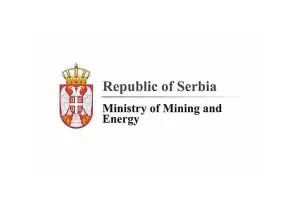 Belgrade, 21 July 2025
Belgrade, 21 July 2025Construction of oil pipeline with Hungary to begin early next year
-
 Belgrade/Athens, 17 July 2025
Belgrade/Athens, 17 July 2025Serbia continues to align with EU in field of energy
-
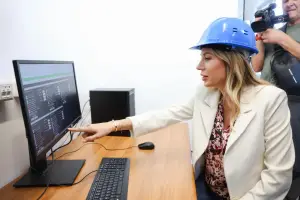 Kostolac, 14 July 2025
Kostolac, 14 July 2025First solar power plant Petka in Kostolac put into trial operation
-
 Belgrade, 11 July 2025
Belgrade, 11 July 2025Potential for improving cooperation with Belarus in many areas
-
 Požega, 5 July 2025
Požega, 5 July 2025Section of Pakovraće - Požega highway officially opened
-
 Belgrade, 2 July 2025
Belgrade, 2 July 2025Technical specifications defined for Serbia-Hungary oil pipeline
-
 Belgrade, 30 June 2025
Belgrade, 30 June 2025IMF confirms Serbia successfully implementing all agreed reforms
-
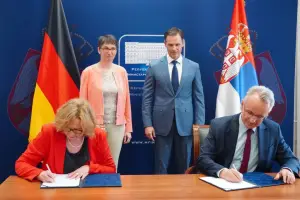 Belgrade, 27 June 2025
Belgrade, 27 June 2025Double Taxation Avoidance Agreement with Germany signed
-
 Kostolac, 25 June 2025
Kostolac, 25 June 2025Construction of Kostolac wind farm nearing completion

